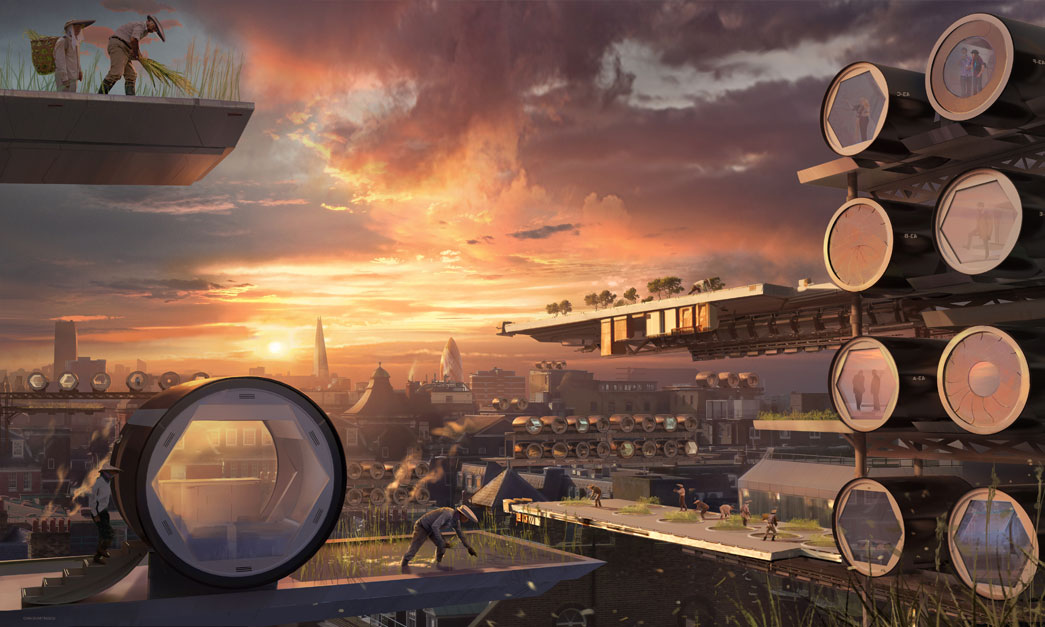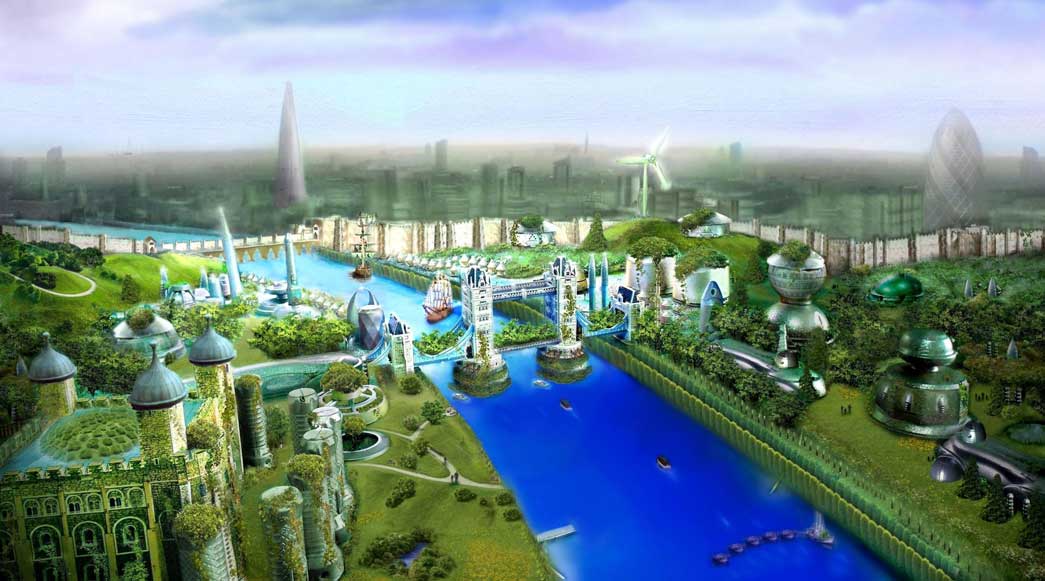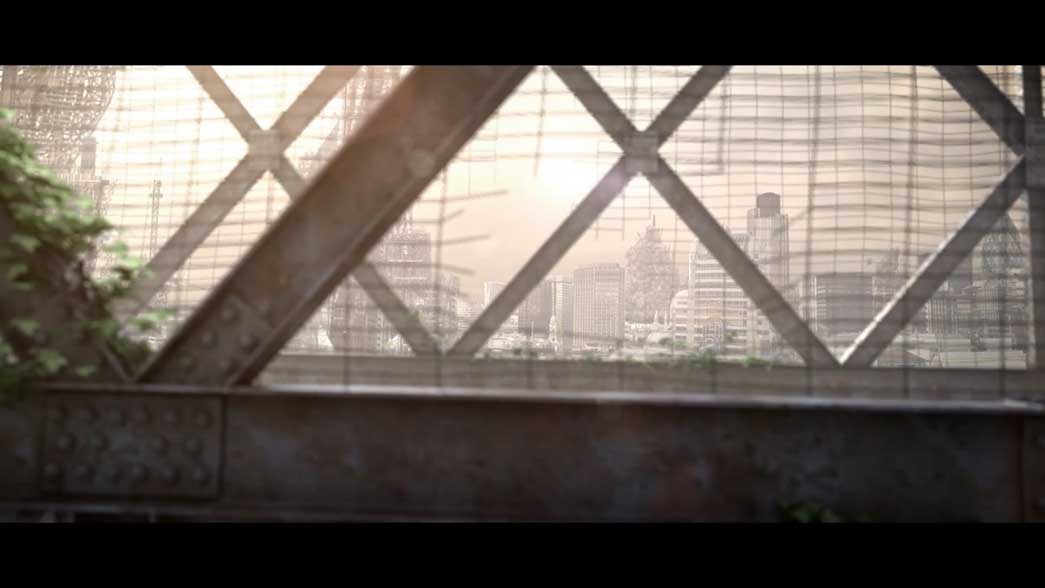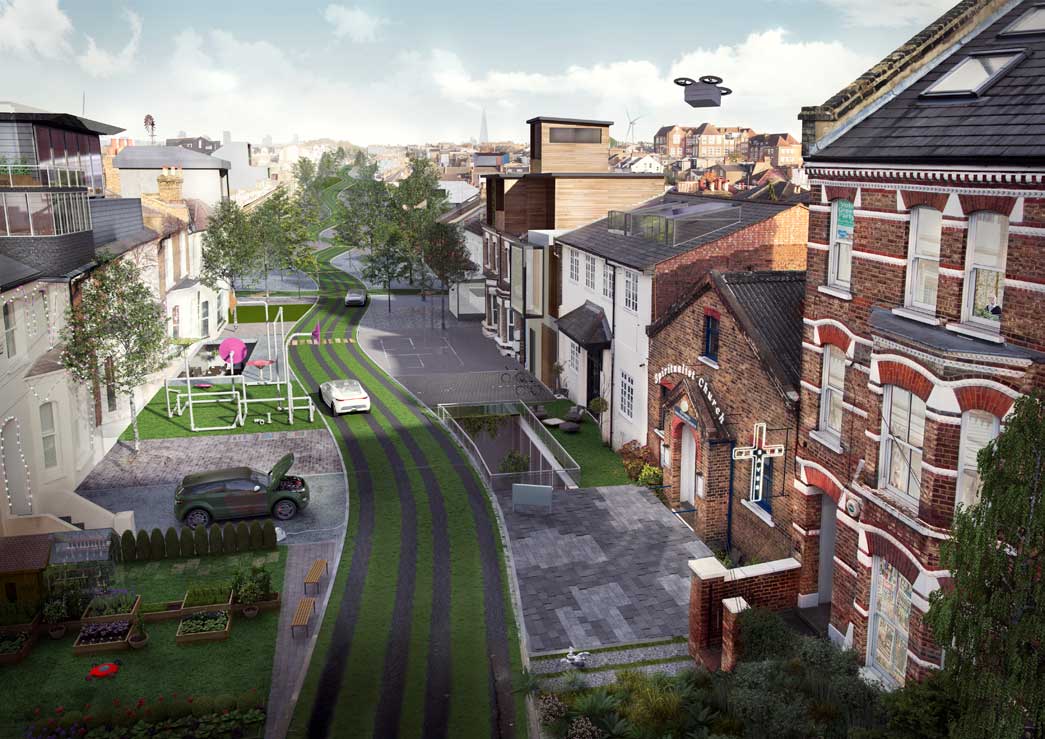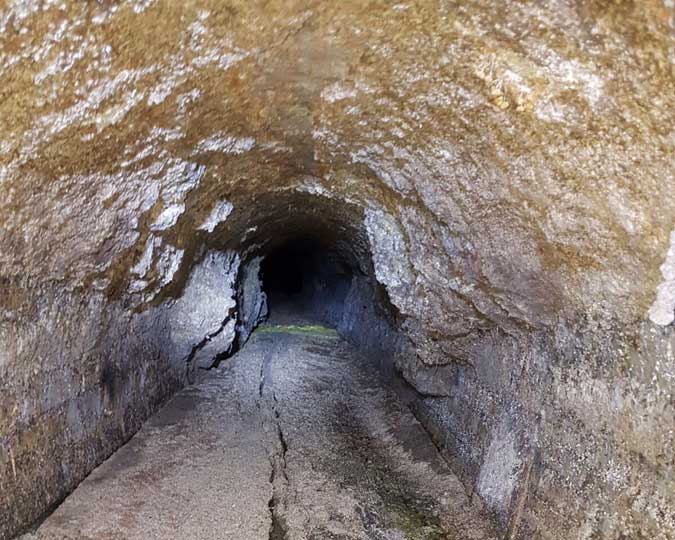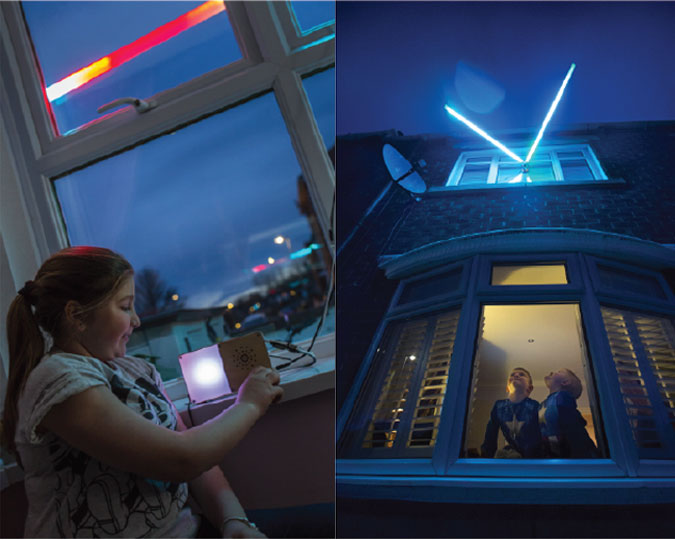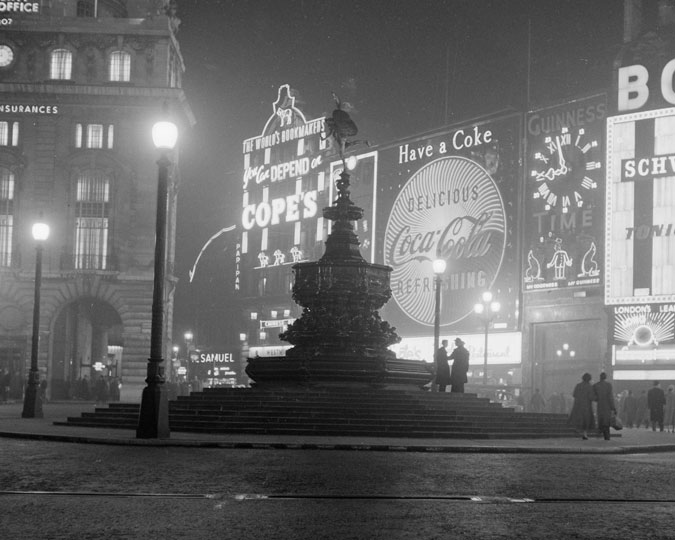Our new exhibition explores possible futures for London through the work of artists, architects and designers. Exhibition curator Foteini Aravani talks about how she chose these virtual visions and what they show us about our current world.
The exhibition is called London Visions: Exaggerated realities for possible futures. Could you give us an idea of what's on display?
We've borrowed and commissioned artworks that depict a futuristic London. The works on display are all radical, all different: architectural drawings, designs for video games, award-winning films.
This is the last exhibition in our City Now City Future season, and it’s a counterpoint to our previous exhibition, The City is Ours. That was based on data from real cities around the world, and we partnered with 25 different London initiatives who were using real solutions to current problems. This exhibition is completely the opposite, this is totally speculative: how the city will look in an imaginative future London.
The strapline of the exhibition is "exaggerated realities for possible futures". I think that people who had visions of the future 30, 40, 50 years ago, their visions were unconnected to reality. Science fiction literature and films were focused on commuting by spaceship and meeting aliens. Our current visions of the future are a lot more related to the life we’re living now. This exhibition is not intended to be filled with wild fantasies, it is just an extension of the world outside the museum.
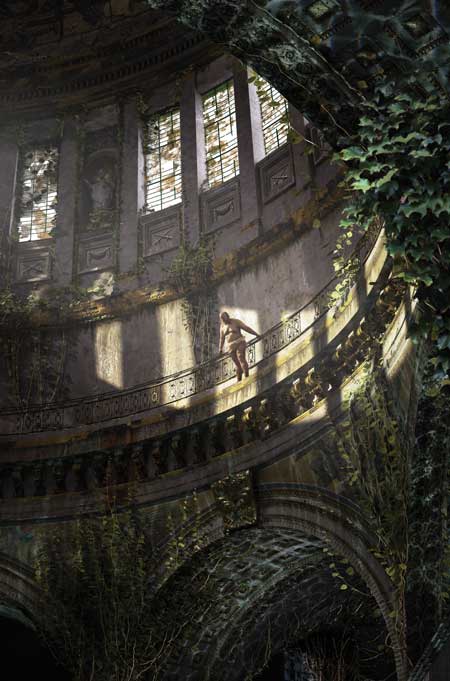
Flooded London, from the London Visions exhibition
Created by SquintOpera for the Museum of London
These visions remind me of the television series Black Mirror, or science-fiction films that show cities after disasters have struck them. Are they intended to show a dystopian vision of the future?
I don’t think they’re pessimistic or dystopian but they’re also not utopian. All these visions show how we will adapt to conditions in the future. We will have the same needs of housing, commuting, work, so the visions show how those different ways of living will adapt to the same needs.
No one can predict the future, all the attempts in the past horribly failed. In the 1960s people thought that we would have hotels on the moon, but our exploration of space has gone backwards.
Because change is so rapid, I think the best way to predict the future is to exaggerate one aspect of the reality that we’re living in, and project it into the future. So for example climate change is our reality, so we exaggerate that into a flooded London- but this vision is not catastrophic, it’s not the end of the world: the question is, how would we change London to survive that? St. Paul’s Cathedral might become a swimming pool.
These visions are about adaptability, not catastrophe.
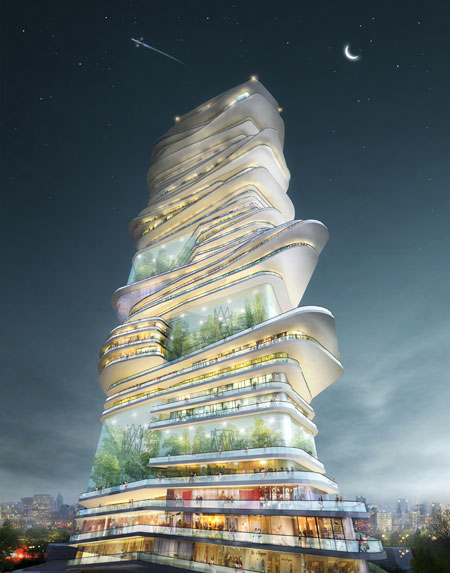
Endless Vertical City
This competition-winning design by SURE Architecture envisions a skyscraper that could house the whole of London, with its own ecosystem and a spiralling form that could be extended upwards inifitely.
Nevertheless, the images of the city are very extreme. They show current developments pushed to the limits of what might be possible.
They’re all exaggerated visions, but all these artworks address issues that we face in London or will face in the city. For example, some projections say there will be 13 million people in London by 2050. How will we cram those people into an overpopulated city? SURE Architecture envision a skyscraper that could extend infinitely upwards to accommodate any population.
Likewise, surveillance is an issue: there are half a million official CCTV cameras in London. We're showing the award-winning film In the Robot Skies, which is about even more intense surveillance, a future where government-controlled drones watch prisoners. These artworks deal with the issues we face by extrapolating them into the future, asking how London's troubles will be augmented in the future.
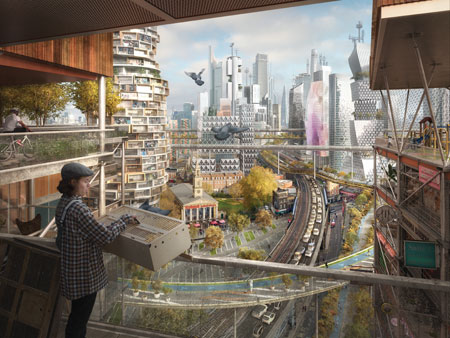
Panel from High-Density London, 2017
Designed by Squint/Opera.
How did you choose which artworks to feature in the exhibition?
London Visions is built around four themes: Cityscapes, Work, Everyday Life, and Nature. Each has works that explore what that aspect of the city might be like in the future. When I started looking for artworks to borrow, I looked at what people were already imagining for a future London, and I discovered that artists were already addressing the issues we were most interested in.
I tried to pick art that challenged our preconceptions of the future. So, for the cityscapes: they are a staple of fantastic depictions of cities- almost a cliché. There has been a lot of talk about how many skyscrapers will be built in London, and how the skyline will change, but I wanted more obscure and abstract visions of how the city will adapt.
The cityscapes on display don’t just depict the physical landscape of the city but attempt to say something about the kind of city we’ll create and the life we’ll live in it. One of the artworks, Megalomania, by Factory Fifteen & Jonathan Gales, depicts London becoming an eternal construction site where new buildings are continually built and demolished, asking what the purpose of this construction really is. These works depict the soul of the city as much as they do the view.
What was most surprising to you about the images that ended up in the exhibition?
I found it fascinating that nature was such a core element of almost every vision, such a contrast to the science fiction of the past like Bladerunner or High Rise, where the city was barren. One example is the potential of driverless cars: they might make transport around the city much more efficient, so that we will no longer need street parking. That is a huge amount of space to reclaim, to regreen.
Likewise, if we become higher-density, the city will need to provide more food: some of the future London images show how we can grow rice on balconies.
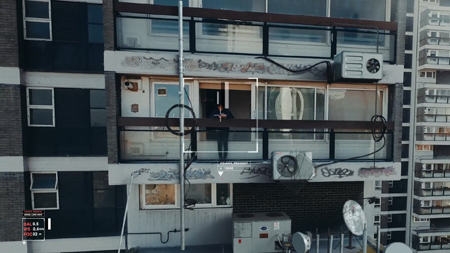
Which is your favourite artwork on display?
We have two films which depict everyday life in the future: one of them, In the Robot Skies is set in a council estate where almost every single resident is being spied upon by a drone. The film itself is technologically futuristic, the first ever recorded entirely with autonomous drone cameras. You can see an extended, 10-minute cut of it in the exhibition. It has a very sweet angle: Two teenagers manage to hack one of these drones to freely exchange messages of love.
In the past, maybe it's their parents that would spy on them- again it’s the message that human life is the same, its just the technology and the surroundings that change. It’s my favourite display in the exhibition- not just because it looks so great, but because it feels very real and very possible.
The film itself is technologically futuristic, the first ever recorded entirely with autonomous drone cameras, but it has a very human feel to it. At the end of the day, although we get caught up in depictions of buildings and technology, the thing that matters in the future city is the people. The city is built for them, but they are often overlooked in depictions of the city.
I hope these artworks, this exhibition, will make people reflect on their lives in the present. London Visions is not saying "London will look like this". It's asking visitors: "Will London look like this? And if it does, what will my life look like?"
London Visions closed on 15 April 2018.








